Discover the innovative Scratch and Sniff Guide to Wine‚ a playful yet educational tool that simplifies wine tasting. Created by Master Sommelier Richard Betts‚ it combines interactive scent technology with accessible language to make wine exploration fun and approachable for everyone‚ empowering readers to confidently navigate the world of wine.
1.1 What is the Scratch and Sniff Guide?
The Scratch and Sniff Guide to Wine is an innovative‚ interactive book designed to simplify wine tasting. It uses scratch-and-sniff technology to help readers identify key wine aromas‚ such as fruit‚ wood‚ and earth notes. The guide is structured as a board book with thick‚ durable pages and vibrant illustrations by Wendy MacNaughton. Unlike traditional wine books‚ it avoids complex jargon‚ making it accessible to both beginners and experienced wine enthusiasts. The guide’s unique approach encourages readers to engage their sense of smell‚ fostering a deeper understanding of wine flavors. By focusing on sensory exploration‚ it transforms wine tasting into a fun and educational experience. This creative format demystifies wine‚ helping readers build confidence in describing and appreciating different varietals.
1.2 Author Background: Richard Betts
Richard Betts‚ a Master Sommelier and one of fewer than 200 in the world‚ is the creator of the Scratch and Sniff Guide to Wine. Known for his approachable philosophy‚ Betts rejects wine jargon and seeks to make wine accessible to everyone. With a deep understanding of wine science‚ he simplifies complex concepts‚ focusing on the essential components of wine aromas. Betts’ passion lies in demystifying wine‚ ensuring it becomes a part of everyday life rather than a luxury. His innovative approach has led to the development of the guide‚ which combines sensory exploration with education. By breaking down wine into categories like fruit‚ wood‚ and earth‚ Betts empowers readers to describe and appreciate wine confidently. His mission is to democratize wine knowledge‚ making it fun and inclusive for all.
1.3 The Interactive Approach to Wine Education
The Scratch and Sniff Guide to Wine revolutionizes wine education through its interactive and playful approach. By combining scratch-and-sniff scent disks with vibrant illustrations‚ the guide engages readers in a hands-on learning experience. This method allows users to directly connect aromas with specific wine characteristics‚ such as fruit‚ wood‚ and earth notes. The guide’s simplicity and visual appeal make complex wine concepts accessible to both novices and experienced enthusiasts. Unlike traditional wine education‚ which often relies on dense text and jargon‚ this approach encourages experimentation and exploration. The interactive elements foster a deeper understanding of wine aromas‚ helping readers build confidence in identifying and describing wines. This innovative method ensures that learning about wine is both enjoyable and memorable‚ breaking down barriers to wine appreciation.
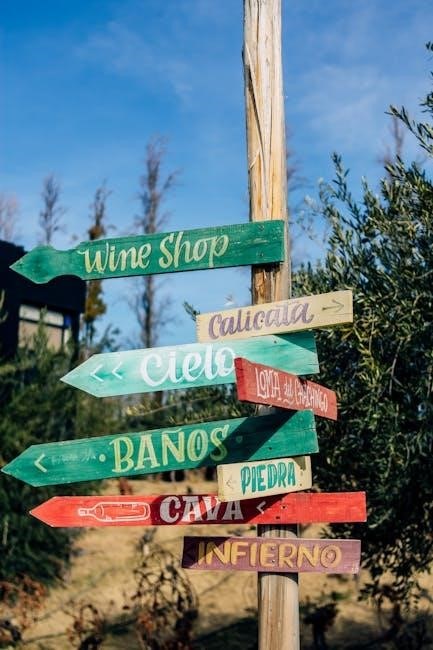
How the Scratch and Sniff Guide Works
The guide uses scratch-and-sniff technology to simulate wine aromas‚ helping users identify fruit‚ wood‚ and earth notes in various wines‚ making the learning process interactive and engaging.
2.1 The Science Behind Scratch and Sniff Technology
The Scratch and Sniff Guide employs micro-encapsulation technology‚ where aromatic chemicals are embedded in scent disks. When scratched‚ the capsules release fragrances mimicking wine aromas. This method simplifies complex scents into identifiable categories like fruit‚ wood‚ and earth‚ helping users connect smells to wine profiles. While the technology isn’t perfect in replicating nuanced notes‚ it effectively engages the senses‚ making wine education interactive and fun. By leveraging this approach‚ the guide bridges the gap between theoretical knowledge and practical experience‚ helping readers develop their olfactory skills and wine vocabulary without overwhelming them with technical jargon. This innovative technique ensures that learning about wine is both accessible and enjoyable for all levels of expertise.

2.2 Key Components of Wine Aroma
Wine aromas are categorized into four main components: fruit‚ wood‚ earth‚ and other. Fruit aromas‚ such as citrus or tropical notes‚ are often the most recognizable. Wood influences‚ like vanilla or oak‚ stem from aging processes‚ while earthy notes‚ such as mushroom or soil‚ reflect the wine’s terroir. The “other” category includes unique scents like floral or spice. The Scratch and Sniff Guide simplifies these complexities by providing tangible scents‚ allowing readers to identify and memorize these elements. This approach demystifies wine tasting‚ making it more accessible and engaging. By focusing on these key categories‚ the guide helps users build a foundational understanding of wine aromas‚ enabling them to describe what they smell with confidence and clarity.
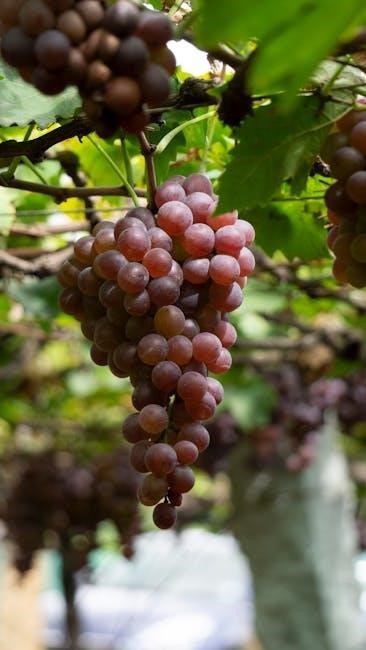
Key Concepts in Wine Tasting
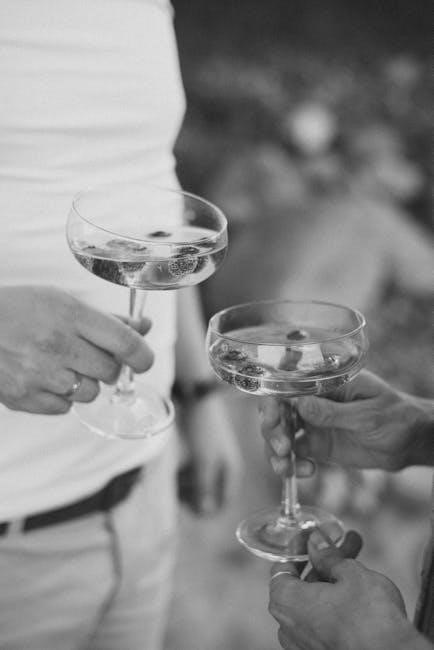
The Scratch and Sniff Guide breaks down wine tasting into approachable elements: fruit‚ wood‚ earth‚ and other unique aromas. This structured approach helps readers identify and explore these components‚ enhancing their tasting experience;
3.1 Fruit Aromas in Wine
Fruit aromas are a cornerstone of wine tasting‚ with the Scratch and Sniff Guide offering scents like peach‚ pineapple‚ and citrus. These fragrances‚ found in white wines like Chardonnay and Sauvignon Blanc‚ help tasters identify varietals and savor their fruity notes‚ making wine exploration engaging and intuitive for all levels of enthusiasts‚ from novices to connoisseurs alike.
3.2 Wood and Earth Influences
Wood and earth influences in wine add depth and complexity‚ with aromas like vanilla‚ caramel‚ and toasted oak from aging in barrels. Earthy notes‚ such as mushroom‚ soil‚ and moss‚ often appear in wines like Pinot Noir and Syrah. The Scratch and Sniff Guide simplifies these nuances‚ offering scents that help tasters recognize how barrel aging and terroir shape a wine’s character. By isolating these elements‚ the guide makes it easier to identify and appreciate the subtle differences between wines‚ enhancing your ability to distinguish between varietals and understand their origins. This interactive approach ensures that even newcomers can confidently explore the rich‚ earthy dimensions of wine‚ making the tasting experience more enjoyable and enlightening.
3.3 Other Unique Aromas
Beyond fruit‚ wood‚ and earth‚ wines often exhibit other distinctive aromas that add character and intrigue. These include floral notes like rose and jasmine‚ often found in Gewürztraminer and Riesling‚ and herbal scents like eucalyptus and mint‚ typical in Sauvignon Blanc and Cabernet Sauvignon. The Scratch and Sniff Guide captures these unique profiles‚ offering a sensory experience that helps tasters identify and remember these subtle elements. Additionally‚ some wines display spicy or smoky undertones‚ while others may have buttery or nutty aromas from specific winemaking techniques. By exploring these diverse scents‚ the guide empowers readers to broaden their sensory vocabulary and deepen their appreciation of wine’s complexity. This interactive approach makes the discovery of these unique aromas both fun and educational‚ ensuring a more engaging and insightful tasting experience for wine enthusiasts of all levels.
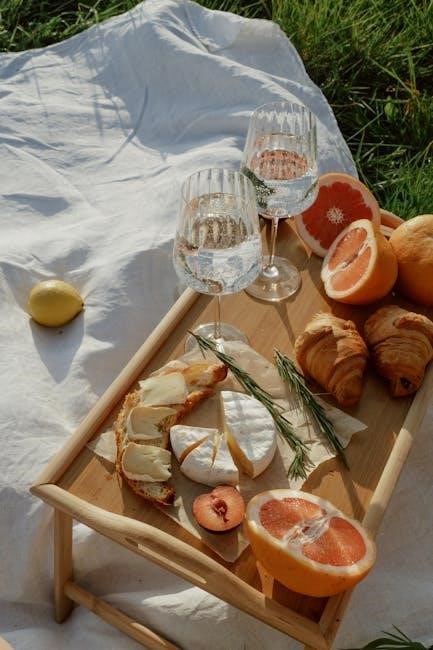
Popular Wines Featured in the Guide
The guide highlights iconic varieties like bold Cabernet Sauvignon and earthy Syrah for reds‚ and crisp Chardonnay alongside zesty Sauvignon Blanc for whites‚ plus sparkling and dessert wines.
4.1 Red Wines: Cabernet Sauvignon and Syrah
The guide explores two iconic red wines: Cabernet Sauvignon and Syrah. Cabernet Sauvignon is known for its bold structure and aromas of black currant‚ spice‚ and hints of tobacco or cedar from oak aging. Syrah‚ or Shiraz‚ offers dark fruit flavors like blackberry and black cherry‚ often with peppery or smoky undertones. The scratch-and-sniff feature allows readers to identify these distinct profiles‚ making it easier to recognize the wines’ characteristic scents. This interactive approach helps wine enthusiasts connect the aromas to the varietals‚ enhancing their tasting experience and building confidence in identifying red wines. Whether you’re a novice or an experienced drinker‚ this section simplifies the complexity of these popular reds‚ making wine exploration more enjoyable and accessible.
4.2 White Wines: Chardonnay and Sauvignon Blanc
The guide delves into two popular white wines: Chardonnay and Sauvignon Blanc. Chardonnay is renowned for its buttery‚ oaky notes and aromas of ripe apples‚ while Sauvignon Blanc is crisp‚ with citrus and grassy hints. The scratch-and-sniff feature helps readers identify these distinct profiles‚ making it easier to discern the nuances of each varietal. Chardonnay’s richness often comes from oak aging‚ while Sauvignon Blanc’s vibrancy is marked by fresh grapefruit and lime. This interactive approach allows wine lovers to connect the scents directly to the wines‚ enhancing their ability to recognize these whites. Whether you prefer the creaminess of Chardonnay or the zesty freshness of Sauvignon Blanc‚ this section simplifies the complexity‚ making white wine exploration engaging and intuitive for all levels of wine enthusiasts.
4.3 Sparkling and Dessert Wines
The guide also explores the captivating world of sparkling and dessert wines‚ offering a unique sensory experience. Sparkling wines‚ such as Champagne‚ are highlighted for their toasty‚ yeasty aromas‚ while dessert wines like Sauternes or Tawny Ports reveal sweet‚ honeyed notes. The scratch-and-sniff feature allows readers to identify these distinct profiles‚ making it easier to appreciate the complexity of these wines. For sparkling wines‚ the guide emphasizes the role of yeast in aging‚ creating a nutty‚ biscuity scent. Dessert wines‚ often made from botrytis-affected grapes‚ showcase luscious fruit and caramel-like aromas. This section helps readers connect the scents to the wines‚ enhancing their ability to enjoy these special categories. Whether it’s the effervescence of Champagne or the richness of a dessert wine‚ this guide makes the experience unforgettable for both novices and connoisseurs.

Expert Contributions to the Guide
The guide features insights from master sommeliers‚ enhancing its educational depth. Beautiful illustrations make complex wine concepts approachable. Forewords from renowned wine experts add credibility.
5.1 Insights from Master Sommeliers
Richard Betts‚ one of fewer than 200 Master Sommeliers worldwide‚ brings unparalleled expertise to the guide. His insights demystify wine tasting‚ focusing on essential elements like fruit‚ wood‚ and earth. Betts avoids wine jargon‚ making the guide accessible to all skill levels. Contributions from other master sommeliers enrich the content‚ offering practical tips and simplifying complex concepts. The guide’s foldout wine wheel‚ a key feature‚ helps readers categorize wines by grape‚ region‚ and barrel type. Illustrations by Wendy MacNaughton add visual charm‚ while the scratch-and-sniff elements engage the senses. Betts’s goal is to empower readers‚ fostering confidence in identifying aromas and flavors. This collaborative effort ensures the guide is both educational and enjoyable‚ making wine expertise attainable for everyone.
5.2 Wine Illustrations and Visual Elements
The guide’s vibrant illustrations‚ crafted by artist Wendy MacNaughton‚ bring wine tasting to life with engaging visuals. The foldout wine wheel is a standout feature‚ categorizing wines by grape‚ region‚ and barrel type. This tool simplifies complex concepts‚ making them visually digestible. The playful‚ kid-like design of the board book appeals to adults‚ blending fun with education. Illustrations of fruits‚ woods‚ and earth elements align with the scratch-and-sniff scents‚ helping readers connect aromas to wine varieties. Crystal Sacca’s design ensures the guide is both visually appealing and user-friendly‚ making wine accessible to all. The combination of art and interactive elements creates a unique learning experience‚ fostering a deeper understanding of wine’s nuances while keeping the process enjoyable and approachable.
5.3 Forewords and Endorsements
The Scratch and Sniff Guide to Wine has garnered praise from renowned figures in the culinary and wine world. Florence Fabricant of The New York Times highlights its ability to broaden novices’ appreciation of wine‚ while Food & Wine magazine describes it as “fiendishly clever.” The guide’s unique approach has been endorsed by Master Sommeliers and wine educators‚ who applaud its ability to demystify wine tasting. Crystal Sacca‚ a bestselling author and creative director‚ has also contributed to the guide’s acclaim‚ emphasizing its playful yet educational design. These endorsements underscore the guide’s success in making wine accessible and fun‚ appealing to both newcomers and seasoned enthusiasts. The forewords and endorsements not only validate the guide’s innovative approach but also celebrate its role in transforming how people engage with wine.
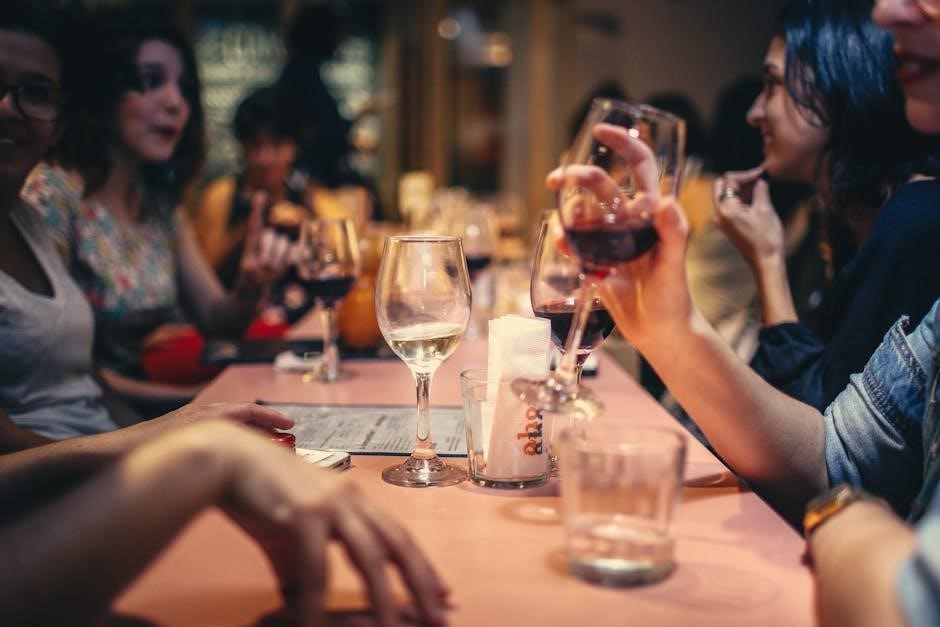
Practical Applications of the Guide
The guide enhances wine tasting sessions‚ aids in food pairing‚ and simplifies hosting wine-tasting parties. Its interactive nature makes wine appreciation accessible and enjoyable for both novices and enthusiasts.
6.1 Enhancing Wine Tasting Sessions
The Scratch and Sniff Guide revolutionizes wine tasting by engaging the senses. With its scent-infused pages‚ it helps identify aromas like citrus‚ wood‚ or earth‚ making tastings more interactive. This tool bridges the gap between theory and practice‚ allowing tasters to connect smells with specific wines. It simplifies complex notes‚ making sessions more enjoyable and educational for all levels. The guide’s simplicity ensures that even newcomers can participate confidently‚ fostering a deeper appreciation for wine’s nuances without overwhelming jargon. By focusing on key scents‚ it enhances the tasting experience‚ turning it into a fun and enlightening journey of discovery. This approach makes wine accessible‚ breaking down barriers and encouraging exploration.
6.2 Pairing Wine with Food
The Scratch and Sniff Guide offers a unique approach to pairing wine with food by focusing on aroma identification. By recognizing specific scents like citrus‚ floral‚ or earthy notes‚ readers can align wines with complementary dishes. For instance‚ a wine with citrus aromas pairs well with seafood‚ while earthy notes might complement hearty meats or mushrooms. The guide simplifies the pairing process by breaking down complex flavors into manageable categories. This interactive method encourages experimentation and confidence in matching wines to meals. It also helps readers understand how aroma profiles influence flavor compatibility‚ making the art of pairing more accessible and enjoyable. The guide’s playful yet practical approach demystifies wine pairing‚ turning it into a fun and creative process for any occasion.
6.3 Hosting Wine-Tasting Parties
The Scratch and Sniff Guide transforms wine-tasting parties into engaging and educational experiences. By incorporating interactive elements like scratch-and-sniff cards‚ guests can explore wine aromas in a fun‚ hands-on way. The guide’s simple‚ jargon-free language ensures everyone‚ from novices to connoisseurs‚ feels included. Hosts can use the guide to create themed tastings‚ such as focusing on specific varietals or aroma categories‚ and encourage guests to share their observations. The visual and sensory elements of the book make it a great icebreaker‚ fostering lively conversations and a deeper connection to wine. Whether for casual gatherings or formal events‚ the guide offers a unique way to entertain and educate‚ making wine tasting approachable and enjoyable for all. It’s an innovative tool for creating memorable and interactive wine-tasting experiences that leave a lasting impression on your guests.

Benefits of Using the Scratch and Sniff Guide
The guide empowers users to identify wine aromas confidently‚ making tasting fun and approachable. It breaks down complex flavors into simple‚ relatable terms‚ helping anyone become a more engaged wine enthusiast.
7.1 Overcoming Wine Intimidation
The Scratch and Sniff Guide demystifies wine by breaking it down into simple‚ relatable terms. It eliminates the fear of not understanding complex wine jargon‚ making it accessible to everyone. By focusing on basic components like fruit‚ wood‚ and earth aromas‚ the guide helps users identify scents without feeling overwhelmed. The interactive scratch-and-sniff feature allows readers to connect smells to specific wines‚ fostering confidence. This approach encourages beginners to explore wine without intimidation‚ transforming it from an exclusive experience into an everyday enjoyment. The guide’s playful design and straightforward language empower readers to discuss wine comfortably‚ proving that expertise doesn’t require pretentiousness. By stripping away the mystery‚ it creates a more inclusive and welcoming world of wine for all.
7.2 Building a Personal Wine Vocabulary
The Scratch and Sniff Guide empowers readers to develop a personal wine vocabulary by connecting scents to specific wines. Through its interactive approach‚ users learn to identify and describe aromas like citrus‚ oak‚ or earth‚ creating a mental library of wine characteristics. This tool simplifies complex descriptions‚ allowing anyone to articulate their experiences confidently. By focusing on four key categories—fruit‚ wood‚ earth‚ and other—the guide helps readers build a foundation for understanding and communicating about wine. The scratch-and-sniff feature reinforces these concepts‚ making them memorable and relatable. Over time‚ users gain the ability to describe wines in their own words‚ fostering a deeper appreciation and confidence in their tasting abilities. This personalized approach ensures that everyone can engage with wine in a meaningful and expressive way‚ regardless of their prior knowledge.
7.3 Making Wine Fun and Accessible
The Scratch and Sniff Guide transforms wine education into a playful experience‚ making it accessible to everyone. By eliminating intimidating jargon and focusing on sensory exploration‚ the guide demystifies wine tasting. Its interactive format‚ complete with scratch-and-sniff elements‚ engages readers in a hands-on way‚ turning learning into a game. Richard Betts’ approach emphasizes that wine should be enjoyed without pretension‚ encouraging readers to explore and savor wines confidently. The guide’s friendly tone and visually appealing design make it a delightful tool for both newcomers and seasoned enthusiasts. By breaking down complex concepts into simple‚ relatable experiences‚ the guide ensures that wine appreciation is both fun and inclusive‚ proving that wine can be a part of everyday life‚ not just a luxury for the few.
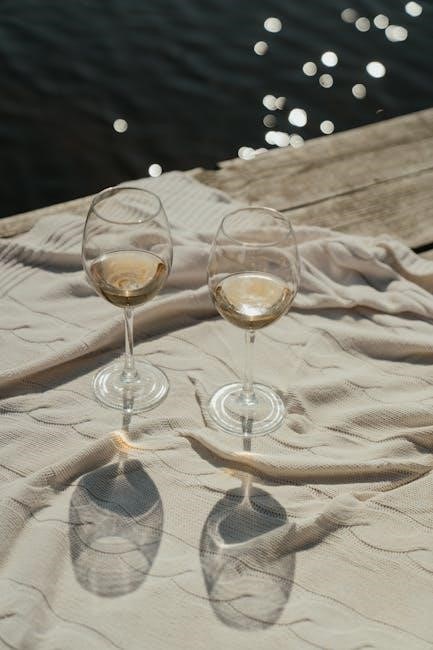
Impact of the Scratch and Sniff Guide on Wine Culture
The guide has transformed wine culture by making it more approachable and less intimidating. Its innovative format has inspired a new wave of interactive wine education‚ fostering inclusivity and democratizing wine knowledge. By breaking down barriers‚ it has encouraged a broader audience to engage with wine‚ shifting perceptions of expertise and inspiring future guides to adopt similar accessible approaches. The guide’s fun and educational style has redefined how people learn about and enjoy wine‚ making it a cultural phenomenon in the world of wine appreciation.
8.1 Democratizing Wine Knowledge
The Scratch and Sniff Guide has democratized wine knowledge by making it accessible to everyone‚ regardless of their background or expertise. Traditionally‚ wine education was reserved for connoisseurs‚ but this guide breaks down those barriers. By using simple‚ relatable language and interactive elements like scratch-and-sniff technology‚ it empowers readers to explore wine without feeling overwhelmed. The guide’s approachable format ensures that novice wine drinkers can learn alongside seasoned enthusiasts‚ fostering a more inclusive wine culture. This shift has encouraged a broader audience to engage with wine‚ proving that understanding and appreciating wine doesn’t require specialized knowledge or jargon. As a result‚ the guide has become a catalyst for making wine education more equitable and enjoyable for all.
8.2 Changing Perceptions of Wine Expertise
The Scratch and Sniff Guide has transformed the way people perceive wine expertise‚ making it more approachable and less intimidating. Richard Betts‚ a Master Sommelier‚ challenges the notion that wine knowledge must be complex or exclusive. By using simple‚ interactive tools like scratch-and-sniff elements‚ the guide empowers readers to trust their own senses rather than relying on jargon or expert opinions. This shift encourages a more inclusive understanding of wine‚ where personal experience and intuition are valued equally alongside formal training. The guide’s playful yet educational approach has helped demystify wine tasting‚ proving that expertise can be cultivated by anyone willing to engage with wine in a fun and hands-on way. As a result‚ the traditional image of the wine expert as an unapproachable authority is being replaced by a more democratic and accessible idea of wine appreciation;
8.3 Inspiring Future Wine Guides
The Scratch and Sniff Guide has set a new standard for wine education‚ inspiring future guides to adopt interactive and sensory-focused approaches. By combining scent technology with visual and tactile elements‚ Betts’ guide has shown how wine education can be both engaging and accessible. Its success has encouraged other wine educators and authors to explore innovative ways to teach wine appreciation‚ moving away from traditional‚ text-heavy methods. The guide’s emphasis on hands-on learning and sensory exploration has particularly influenced the development of tools for beginner wine enthusiasts. As a result‚ the Scratch and Sniff Guide is widely regarded as a model for modern wine education‚ proving that learning about wine can be both fun and effective. Its impact continues to shape the way wine knowledge is shared‚ inspiring a new generation of wine guides that prioritize interactivity and user experience.


